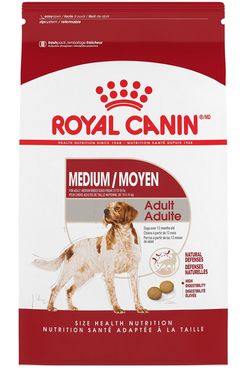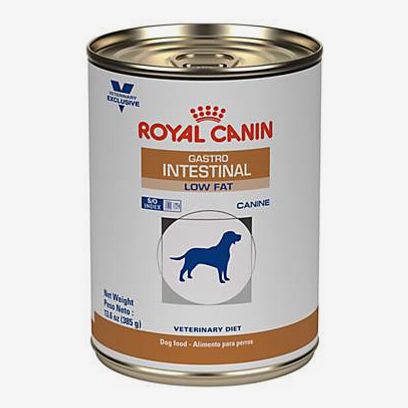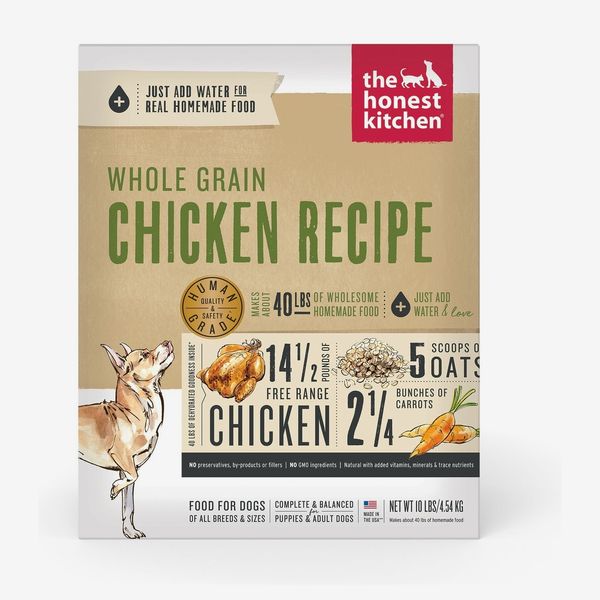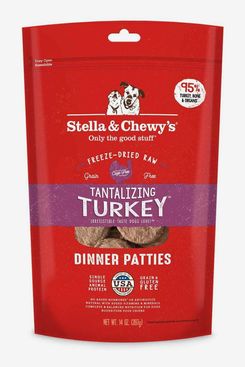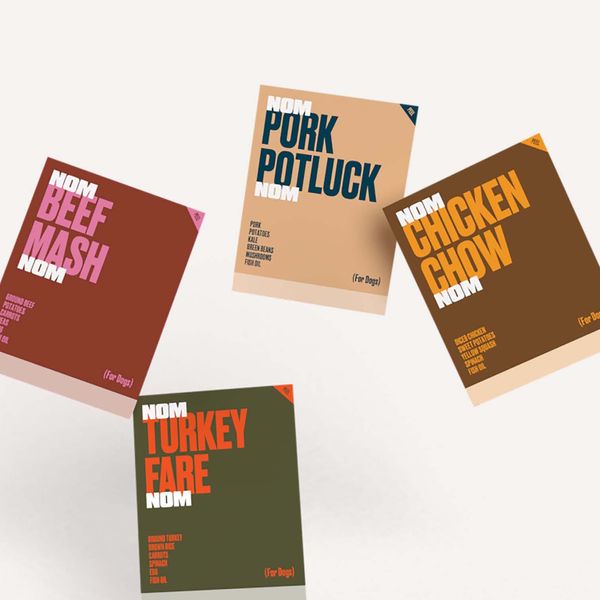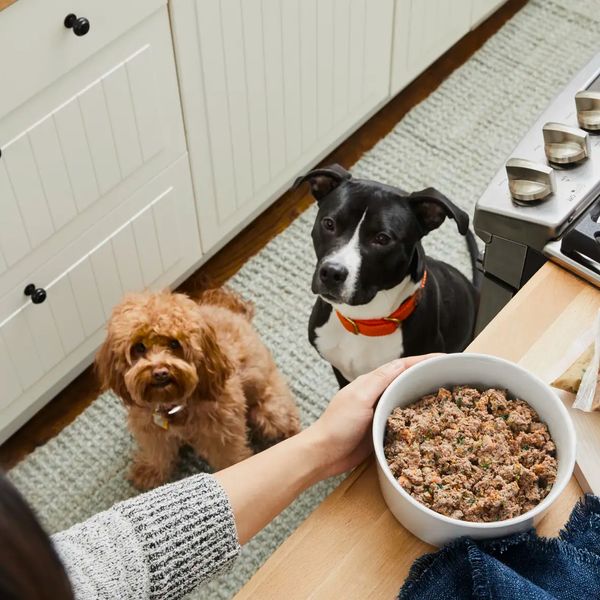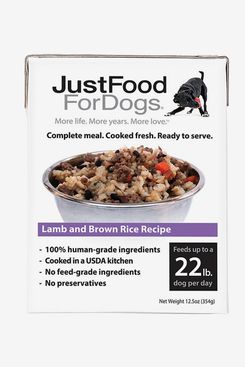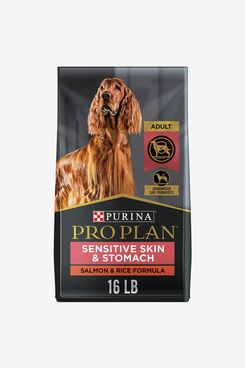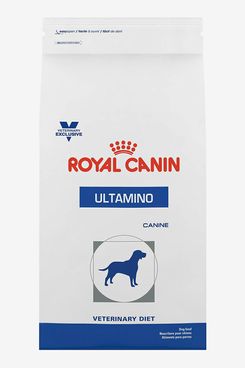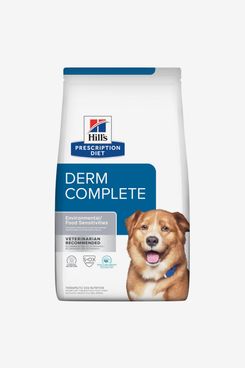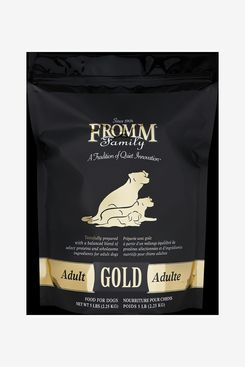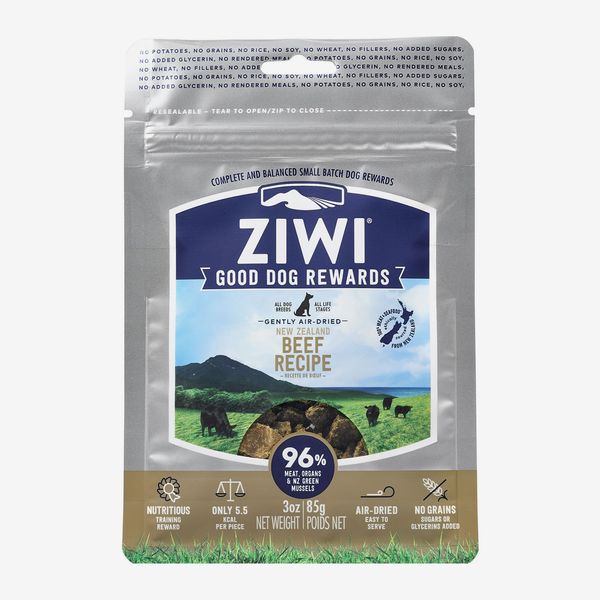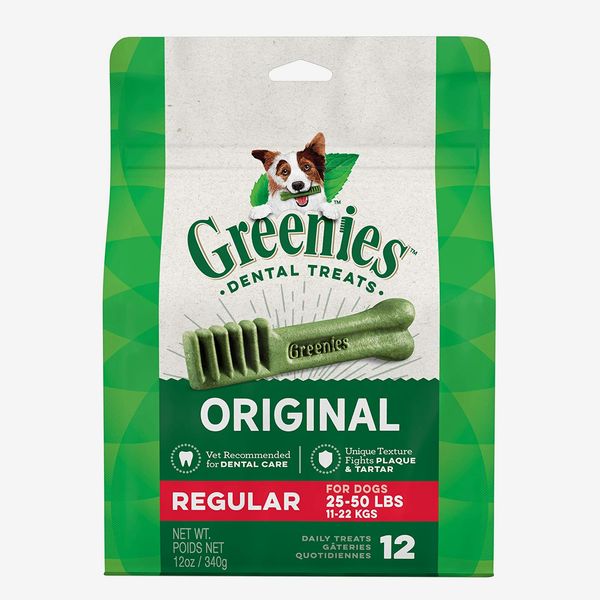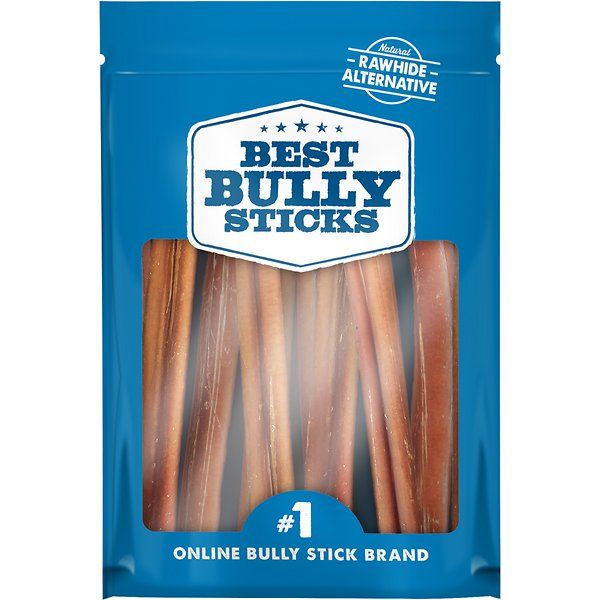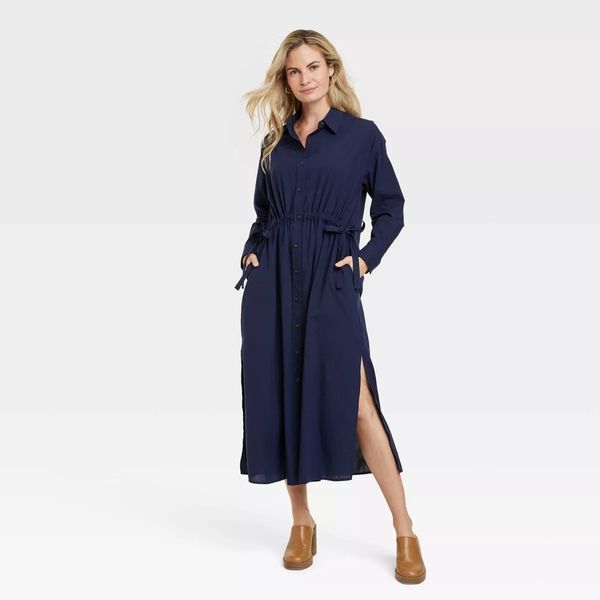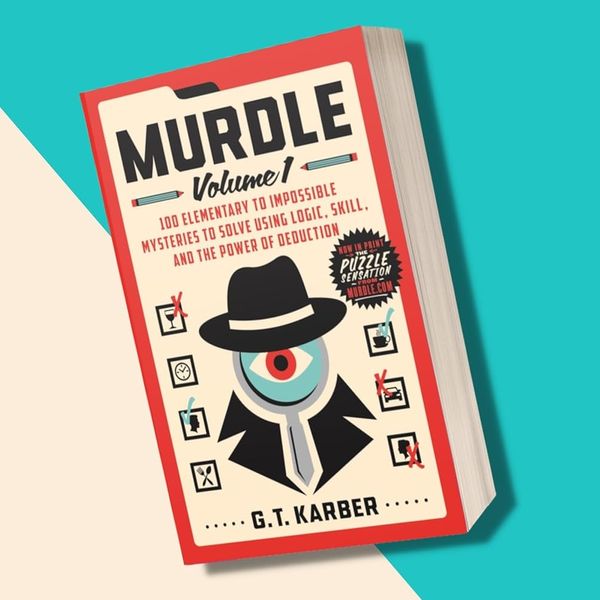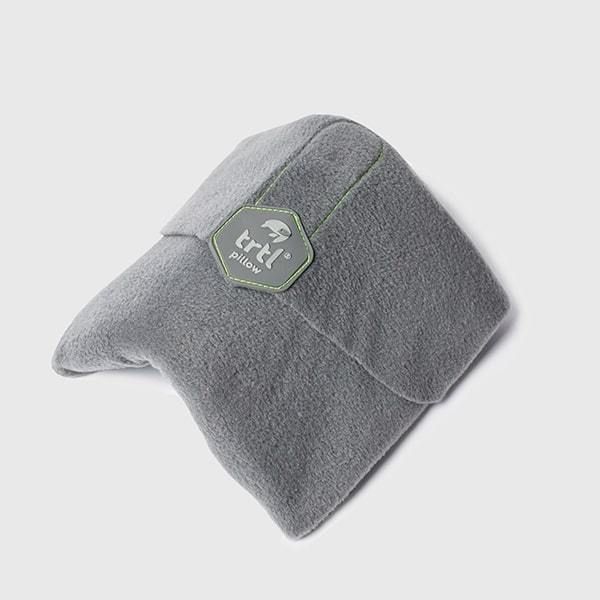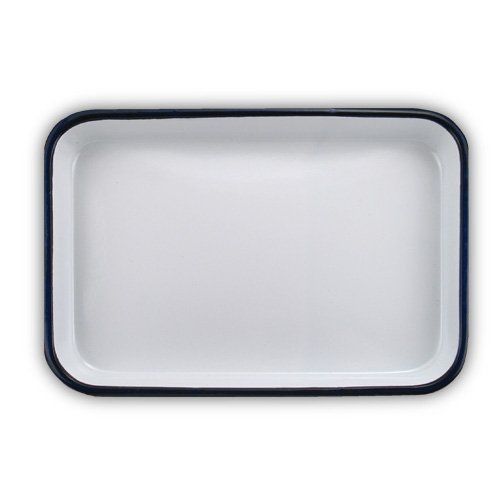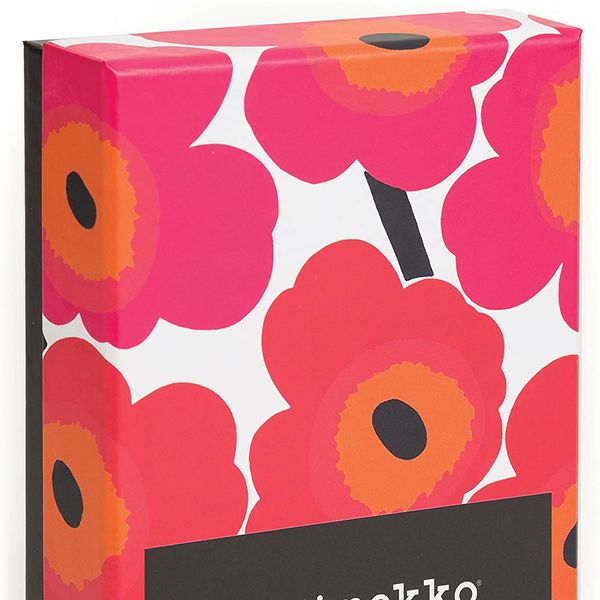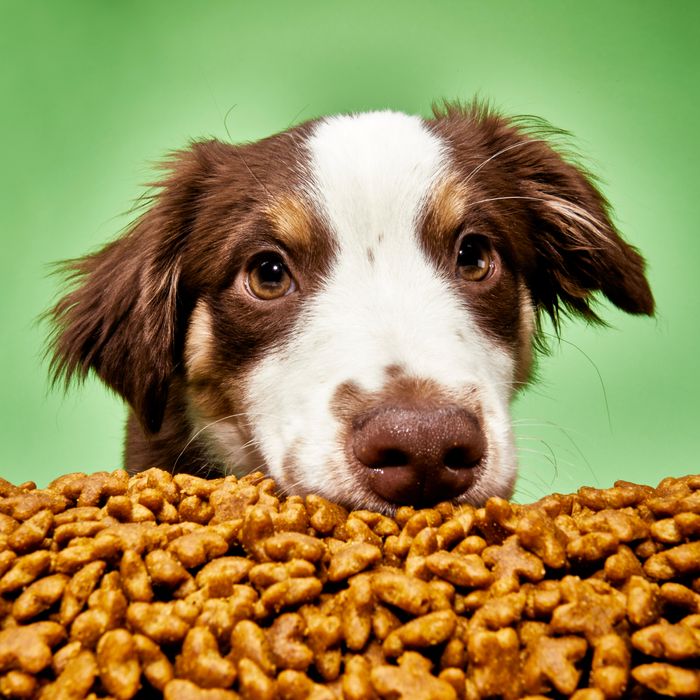
In this article
When I brought home my rescue dog, an Australian shepherd named Shea, there were a few things on my new dog to-do list: choose a good walking leash, help Shea identify her favorite napping spot, and, most importantly, find dog food that was both nutritious and would prompt a licked-clean bowl.
It turns out that there are many kinds of dog food to choose from. I use Royal Canin — which is the formula that I named our best overall here, and the favorite of several veterinarians and dog owners I talked to for this story — but depending on your dog’s needs, you may want something different. There are a few factors to consider: What’s your dog’s age, size, and breed? Do they have any health issues? Do you want to serve dry food because it’s easy to store and portion or wet food to help your pet with hydration? And, of course, don’t forget palatability — meaning how much your pup enjoys the food.
To help you sort through all of the options out there, I tested a few dog foods with Shea and Great Dane Benny and then to make sure I covered all of my bases, I consulted with 16 veterinarians, animal specialists, and dog owners about the foods they recommend for their patients and use for their own pups. Note that since every dog is unique, if you’re thinking about changing your pet’s diet, it’s a good idea to consult your vet before doing so. And if you’re shopping for other pet-related items, check my guides to dog beds, trainer-approved treats, and dog coats even fussy pups will tolerate.
What we’re looking for
Nutrition
It’s important to look at a brand’s recall history and to locate an official nutritional-adequacy statement from the Association of American Feed Control Officials on the bag, box, or can. The statement is a sign that the food is nutritionally complete and balanced, explains Dr. Zay Satchu, the co-founder and chief veterinary officer at Bond Vet. If you’d like to dig deeper than AAFCO standards, Finn says he prefers “companies that employ a full-time board-certified veterinary nutritionist on staff and don’t just consult with one.” This can help ensure the food is backed by research a brand is invested in, says Dr. Gabrielle Fadl, a medical director at Bond Vet. Dr. Shelly Zacharias, a vice-president of medical affairs for Gallant, also stresses that ingredients lists should name the exact type of meat included (instead of “meat” or “meat byproducts”). This can help identify sensitivities to specific proteins, Fadl says. All the dog food recommended below meets or exceeds AAFCO standards.
We should also note that the FDA has warned against certain grain-free foods, which the agency thinks may be linked to an increase in dilated cardiomyopathy in dogs. According to veterinarian Dr. Sara Ochoa, “large and giant-breed dogs are predisposed to this disease.” The majority of the vets we spoke with explained that the correlation doesn’t stem from the lack of grains in these foods but rather from the legumes or peas that have been added as a replacement. Veterinarian Dr. Angie Krause says, “When a dog’s diet gets so high in legumes as a protein source, it may change their uptake of certain amino acids.”
Breed Size
The main difference in foods formulated for small and toy dog breeds, according to Dr. Jamie Richardson, the chief of staff at Small Door Veterinary in New York City, is that these are made in smaller chunks. Because little dogs have smaller mouths and teeth, you want to give them something that’s easy for them to bite and chew. And because they don’t eat as much as large or giant-breed dogs, you may have more financial wiggle room when it comes to choosing their food. Meanwhile, Dr. Jennifer Lopez, a veterinarian at URvet Care, says large-breed dogs have a slower metabolic rate, so they typically need low-calorie food in greater portions to make sure they “stay full and avoid overfeeding or gaining weight that might be detrimental to their health, not to mention their joints.”
Wet or dry food
The decision to feed your dog wet food rather than dry often comes down to convenience, personal preference, and price. But if you have a dog that’s reluctant to drink enough water, serving wet food can be a sneaky way to help it stay hydrated. Fresh and human-grade dog meals should be considered wet foods since their cooking processes help retain moisture, but these usually come frozen and need to be thawed before feeding.
Cost
We’ve listed the approximate cost per pound for each option on this list based on the manufacturer’s suggested retail price.
Best dog food overall
Nutrition: First ingredients are brewer’s rice, chicken by-product meal, and wheat | Breed size: Available in extra small, small, medium, large, and giant breed sizes | Wet or dry food: dry | Cost: $3.65 per pound
I tested Royal Canin’s Adult Formula Dog Dry Food with Shea for two months and was not only impressed by how it met all of her breed-specific and mid-aged dog needs but also by how much she clearly enjoyed eating it, judging by how often she licks her chops. And while I tested the medium-size formula with Shea, the line also features recipes for mini, small, large, and giant dogs, making the formula versatile enough that I crowned it our best overall.
When I first ripped open the bag of food, a strong meaty aroma wafted out — and Shea immediately sprinted to her bowl. She’s usually a grazer at feeding time, but I noticed that she was gobbling down the kibble, which is significantly moister than other brands I’ve used (like the Core line from Wellness). Fortunately, the pieces of this food are sized to fit her “medium” jaw shape — not too big, not too small — which encourages proper chewing and helps prevent choking, even when the flavor inspires scarfing. After meals, Shea — who is very active, and spends a lot of time playing outdoors — seemed satiated. The key indicator? A decrease in her begging for my work-from-home snacks.
Shea and I aren’t the only fans of Royal Canin. Of the 13 veterinarians I spoke to, ten said the brand’s dog food is their top pick for their own pets and the dogs they treat at work. “The best foods are backed by actual research and feeding trials,” says Dr. Gregory Gstrein, a California-based veterinarian. “Royal Canin does the extensive work needed to prove their foods yield excellent real-world results.” Dr. Catriona Love, a medical director at Mercer Street Vet Hospital, feeds Royal Canin to her five-pound Chihuahua rescue and says that Royal Canin is the most palatable of the three dog food brands she recommends to her patients, and that “The animals tend to like it more” than the others. And, for the owners: It’s easy to store and, since it’s a dry formula, there’s less chance of spoilage.
Best wet dog food
Nutrition: First ingredients are water, pork by-products, and pork liver | Breed size: All breed sizes | Wet or dry food: Wet | Cost: $0.37 per pound
Royal Canin’s wet food was also a favorite among the experts I spoke to for this story — and especially this low-fat recipe, thanks to its easily digestible ingredients. Veterinarian Dr. Jeff Werber says his dogs “love with a capital L” this formula from Royal Canin, and he likes it because the brand has a positive track record and a trusted name, and its products are readily available. He told us he has always been a fan of mixed feeding, meaning providing a little of both dry and wet foods. Werber explains that because a lot of dogs don’t drink enough water, adding moist canned food (which has fewer carbs and more flavor) to their dry food is a win-win.
Rifruf co-founder Peter Liu is another fan. When his French bulldog, Caesar, began developing digestion issues (which can be common in brachycephalic dogs that can be identified by their shortened snouts), Liu says a veterinarian recommended switching the pup to this gastrointestinal-friendly food. Caesar quickly took a liking to the wet meal, Liu says, because it smells similar to the fresh food he previously consumed — only it’s made with low-fat ingredients that are more suitable for his sensitive stomach.
While this is one of the cheaper foods on our list, it’s important to note this wet food is packaged in 13.5-ounce cans, so you won’t be purchasing as much food when compared to most other dry meals.
Best dehydrated dog food
Nutrition: First ingredients are dehydrated chicken, organic barley, and dehydrated potatoes | Breed size: All breed sizes | Wet or dry food: Dry dehydrated | Cost: $7.75 per pound
For some dogs, dehydrated food is the best option — especially if your pet finds it difficult to chew or digest kibble. Strategist senior editor Crystal Martin tipped me off to this one, which is made with minimally processed human-grade ingredients. She says that when her soft-coated Wheaten terrier started having stomach issues that caused the dog to lose almost 25 percent of her total body weight, she turned to this recipe from The Honest Kitchen and never looked back. “It stopped her [gastrointestinal] problems almost immediately, and she’s been fine ever since,” Martin says of the food she’s chosen for the past six years. And even though this food is gently dehydrated, Martin says it also looks like human food, “almost like they dehydrated every ingredient then minced it.” (To serve, owners add warm water to “rehydrate” the food and wait a few minutes for absorption.)
Best dehydrated raw dog food
Nutrition: First ingredients are turkey with ground bone, turkey liver, and turkey gizzard | Breed size: All breed sizes | Wet or dry food: Dry dehydrated raw | Cost: $2.25 per pound
When it comes to raw-food diets for dogs, there are some strong opinions in the veterinary community. Unsurprisingly, many vets feel that feeding your pet raw food can lead to potential health risks for both the dog and the humans who live with it. “I am not an advocate for any raw food at this time, as there is a very real risk for contamination to other household members, including people,” says Finn. “If the research comes out years down the road and suggests that raw food is indeed better for pets and can improve their lives, then I will be the first person to switch my dogs over immediately. Unfortunately, the research is lacking at this point in time.”
Others, including Krause, Liff, and veterinarian Dr. Marty Goldstein (who literally wrote the book on holistic medicine for pets and has his own line of dog food), explain that extra hygienic precautions need to be taken with raw foods, but they believe those precautions are worth the added nutritional benefits, such as improved digestion and immune-system functioning as well as less inflammation and fewer allergies. Liff says she has patients that do well on raw diets, but she always has “a lengthy discussion with owners about food handling to prevent foodborne illness.”
According to Goldstein, freeze-dried raw foods have less risk of foodborne illnesses and can be stored without refrigeration. Krause says that if her own dog didn’t have specific food sensitivities, she would feed it a raw diet — specifically, these Stella & Chewy’s dehydrated raw turkey patties. They meet AAFCO standards and can be served dry or mixed with a little warm water to rehydrate them. Krause told us she’s a fan of literally everything the brand makes, saying, “Stella & Chewy has never put out anything I haven’t liked.”
Best fresh dog food
Nutrition: First ingredients are ground beef, russet potatoes, and eggs | Breed size: All breed sizes | Wet or dry food: Frozen wet | Cost: $8.00 per pound
While some raw meals like the one above are flash-frozen, fresh or human-grade dog food is typically cooked before it’s packaged. The food generally looks a lot closer to something that humans might eat — which can be comforting for some dog owners. “If health and wellness are a priority, I absolutely recommend human-grade fresh food,” says Satchu, who feeds fresh-cooked dog food to his own pets. However, he stresses that whatever food you pick (especially some of the newer, designer-label foods) must be nutritionally balanced. The AAFCO stamp of approval helps to make this easy to differentiate. When we spoke to veterinarians about the best food for puppies, Richardson recommended the direct-to-consumer subscription brand Nom Nom. According to her, the brand works directly with a veterinary nutritionist to create diets specific to your pet that conform to AAFCO standards. “There are not a lot of other companies who do that,” she told us.
Nom Nom says its plans start at $2.40 a day for the smallest dogs with few dietary restrictions. To determine a meal plan (and an actual price), the company asks you to fill out a survey about your pet’s breed, age, activity level, and weight goals. If you want Fido to try before you buy, you can order a variety pack with four of the brand’s foods for a flat $15.
Best (less expensive) fresh dog food
Nutrition: First ingredients are chicken liver, Brussels sprouts, and cabbage | Breed size: All breed sizes | Wet or dry food: Frozen wet | Cost: Varies based on subscription
If you’re looking for a slightly cheaper subscription-based food, the Farmer’s Dog is another solid fresh option that Satchu recommends. The company says plans start at around $2 a day for the smallest dogs with few dietary restrictions to upwards of $12 for the largest breed dogs. Like Nom Nom, this brand works with board-certified veterinary nutritionists to formulate recipes that are complete and balanced according to AAFCO standards. As further evidence of its food’s quality, the Farmer’s Dog has released results from ongoing long-term feeding trials showing that the nutritional value in its food exceeds AAFCO recommendations. Again, you’re asked to answer questions about your dog’s breed, age, activity level, and weight goals to determine a meal plan and its actual cost.
Best non-subscription fresh dog food
Nutrition: First ingredients are lamb hearts, brown rice, and cauliflower | Breed size: All breed sizes | Wet or dry food: Wet food | Cost: $0.68 per pound
For those who are curious about fresh food but don’t want to commit to a subscription, JustFoodForDogs is a good bet. It comes recommended by Finn, who notes that the California-based company “has an astounding team of veterinarians from multiple specialties” and “is doing a good job in terms of fresh-cooked food.” Fadl also recommends the brand because they offer vet-prescribed diets — and because they’ve overcome “one of the biggest challenges” with prescription foods: low palatability. The company’s PantryFresh range is made up of complete meals formulated from human-grade ingredients like macaroni, rice, turkey, beef, potato, lamb, and chicken. As the name implies, these prepackaged foods are pantry stable and ready to eat, yet they contain no iffy preservatives, which means they can work for a dog with allergies or even one with kidney disease, Fadl says.
Best dog food for large or giant-breed dogs
Nutrition: First ingredients are salmon, barley, and rice | Breed size: Large breed | Wet or dry food: Dry food | Cost: $3.41 per pound
According to the experts I interviewed, large and giant-breed dogs need very specific food to meet their protein needs — and should avoid food containing legumes as a protein source. Nicole Goudey-Rigger, the owner and CEO of doggy-day-care service Pets a Go Go, told us she took her two purebred Akitas and two medium-size mixed breeds (a golden retriever–Chow Chow mix and an Australian shepherd mix) off their low-grain diets after the potential connection between DCM and grain-free food was identified. Instead, she now feeds her four big dogs Purina Pro Plan Salmon Sensitive Stomach, which contains brewer’s rice and barley (and no legumes). She and four other experts we spoke with like Purina Pro Plan foods because, as Gstrein points out, the recipes meet AAFCO standards and are formulated by a veterinary nutritionist.
Goudey-Rigger adds that the Purina Pro Plan line also features a wide variety of proteins, including chicken, beef, salmon, duck, lamb, pork, and even quail. Looking for a variety of proteins in a brand’s line is important, she says, because “not all proteins agree with all dogs.” After discovering her Australian shepherd’s sensitivities to chicken, for example, Fadl began feeding the Purina Pro Plan food shown because the main protein source is fish. “A lot of other salmon-flavored foods still have some chicken by-products, so you don’t get a great response to feeding,” she says. Ochoa’s dog also likes Purina Pro Plan and gets a small portion of the brand’s shredded-chicken food (a legume-free mix that includes chewy and crunchy pieces) as a complement to Hill’s Science Diet.
Best prescription dog food for allergies
Nutrition: First ingredients are cornstarch, hydrolyzed poultry by-products aggregate, and coconut oil | Breed sizes: All breed sizes | Wet or dry food: Dry food | Cost: $8.53 per pound
Although Krause is a fan of minimally processed or raw-food diets for dogs (and is a brand ambassador for the freeze-dried raw-dog-food brand I and Love and You), she says her own pug is “allergic to life.” Because of allergies, Krause’s dog is on a super-hydrolyzed diet, which means the proteins it eats are broken down into individual amino acids. She says the diet “is so far from natural, but he does great on it and he’s happy on it.” Liff, Gstrein, and Satchu also recommend this hydrolyzed diet for dogs with allergies, as does veterinarian Dr. Jennifer Coates, who feeds it to her elderly Coates, who feeds it to her elderly boxer, Apollo, who has severe inflammatory-bowel disease.
Note: While this food is for sale online, you do in fact need a vet’s prescription to purchase it.
Best (less expensive) prescription dog food for allergies
Nutrition: First ingredients are brown rice, brewers rice, and egg product | Breed sizes: All breed sizes | Wet or dry food: Dry food | Cost: $6.58 per pound
Hill’s vet-prescribed food is about $1.25 less per pound than the Royal Canin Ultamino, and it’s what I feed my Great Dane, Benny, to curb his skin allergies. Last summer, when I noticed Benny licking his legs and paws until the skin became red and raw, our vet suggested switching to three scoops of this dry food mixed with the brand’s wet meal twice daily. Since the switch, Benny has displayed fewer allergy symptoms like itching and licking, plus he seems to enjoy it even more than the Core line from Wellness, which we were previously feeding him.
Note: While this food is for sale online, you need a vet’s prescription to purchase it.
Best non-prescription dog food for allergies
Nutrition: First ingredients are chicken, chicken meal and broth, oatmeal, pearled barley, brown rice | Breed size: All breed sizes | Wet or dry food: Dry food | Cost: $3.20 per pound
For over seven years, our writer Arielle Avila has relied on food from Wisconsin-based Fromm to feed her hound mix, Maggie, who’s suffered from itchiness caused by skin allergies since she was a puppy. The food was recommended to her by a veterinarian, and after eating it for about one month, the dog’s symptoms finally began to clear. (Maggie only gets dandruff and the occasional hot spot now, Avila says.) Avila also says she likes that the company offers its dry food in five-pound bags, which allows her to change up the flavors (and recipes) she feeds Maggie each week. And unlike the two picks above, this doesn’t require a vet’s prescription, so purchasing the food is less of a hassle, Avila says. It’s not available at large retailers, but Avila says she can typically find it online or at local pet stores, like Trixie’s Pet Food Supplies & Accessories in Brooklyn.
Some of the best expert-approved dog treats to try, too
Our experts:
• Arielle Avila, Strategist writer
• Dr. Jennifer Coates, veterinarian
• Dr. Gabrielle Fadl, medical director at Bond Vet
• Dr. Marty Goldstein, author of The Nature of Animal Healing: The Definitive Holistic Medicine Guide to Caring for Your Dog or Cat and creator of his own dog-food line
• Nicole Goudey-Rigger, owner and CEO of doggy-day-care service Pets a Go Go
• Dr. Gregory Gstrein, veterinarian
• Dr. Angie Krause, veterinarian
• Peter Liu, co-founder of Rifruf
• Dr. Catriona Love, medical director at Mercer Street Vet Hospital
• Dr. Jennifer Lopez, veterinarian at URvet Care
• Crystal Martin, Strategist senior editor
• Dr. Sara Ochoa, Texas-based veterinarian and veterinary consultant for doglab.com
• Dr. Jamie Richardson, chief of staff at Small Door Veterinary in NYC
• Dr. Zay Satchu, co-founder and chief veterinary officer at Bond Vet
• Nicole Goudey-Rigger, owner and CEO of doggy-day-care service Pets a Go Go
• Dr. Jeff Werber, veterinarian
The Strategist is designed to surface the most useful, expert recommendations for things to buy across the vast e-commerce landscape. Some of our latest conquests include the best acne treatments, rolling luggage, pillows for side sleepers, natural anxiety remedies, and bath towels. We update links when possible, but note that deals can expire and all prices are subject to change.

